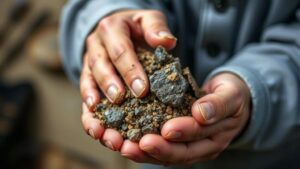How to Dowse for Subsurface Anomalies in Urban Environments
How to Dowse for Subsurface Anomalies in Urban Environments
Dowse, or dowsing, is an ancient practice often associated with locating water, minerals, or other hidden resources using divining rods or pendulums. In urban environments, dowsing has evolved to identify subsurface anomalies, such as underground utilities, voids, or other hazards. This article will outline the principles of dowsing, effective techniques, and practical applications for urban settings.
The Principles of Dowsing
Dowsing operates on the premise that individuals can sense energies or vibrations emitted from subsurface anomalies. method typically involves using simple tools such as a Y-shaped branch, pendulum, or metal rods. Although scientific evidence remains a subject of debate, practitioners assert that they can tap into an intuitive sense that guides them toward locations of interest.
Tools Required for Dowsing
Successful dowsing relies on using suitable instruments. Commonly used tools include:
- Y-shaped Rods: Usually made from wood, these rods are held in each hand. When the rod crosses, it indicates a potential anomaly.
- Metal Rods: Similar to Y-shaped rods but often bent into a “L” shape, these rods can provide a more sensitive feedback.
- Pendulums: A weighted object attached to a string; movements of the pendulum can signal responses to questions about subsurface conditions.
Training the Dowsers Sensitivity
To effectively dowse, practitioners must cultivate a heightened sense of awareness. This involves:
- Mindfulness Techniques: Engaging in meditation or breathing exercises can improve focus.
- Practice Sessions: Regular practice in diverse locations can help dowsers hone their skills and develop confidence.
- Recording Results: Keeping a log of dowsing sessions and outcomes can identify patterns and improve accuracy over time.
Identifying Subsurface Anomalies
In urban areas, a variety of subsurface anomalies may be present. Some key examples include:
- Buried Utilities: Water, gas, electricity, and telecommunications lines are often buried underground. Accidental digs can lead to hazardous situations.
- Historical Remnants: Old structures and foundations may present structural integrity issues or be hazardous during construction.
- Contaminated Sites: Industrial activities can result in underground pollutants that need identification and remediation.
Methods of Dowsing in Urban Environments
The methodology for dowsing in cities often requires specificity due to the complexity of urban subsurface features. Here are steps to optimize effectiveness:
- Define Your Objective: Clearly stating what you are searching for (e.g., water pipes, underground tanks) is crucial.
- This Interaction Process: Walk slowly over the area of interest while holding your dowsing tool, allowing your intuition to guide you.
- Depth Considerations: Acknowledge various depths of anomalies; use markers to denote areas where the dowsing tool reacts.
Real-World Applications and Case Studies
One noteworthy case is the use of dowsing to locate buried utility lines before excavation work commenced in Los Angeles. Contractors utilized dowsers who successfully identified utility locations that were undocumented, saving time and preventing accidents.
Another example is dowsing applied to locate historical artifacts in Bostons underground during construction projects. Archaeologists teamed up with dowsers to pinpoint sites of significant historical interest, ensuring that artifacts were preserved appropriately.
Potential Questions and Concerns
Despite its ancient roots, dowsing can provoke skepticism. Potential users may wonder about its reliability or legal status. Here are clarifying points:
- Lack of Scientific Support: While dowsing lacks extensive scientific validation, many practitioners report success and anecdotal evidence supports its use in field situations.
- Legal and Ethical Considerations: Always obtain necessary permits and inform property owners before conducting dowsing activities.
Actionable Takeaways
To wrap up, dowsing for subsurface anomalies can be an invaluable tool in urban exploration and excavation. Here are some takeaways for effective practice:
- Familiarize yourself with various tools and practice regularly.
- Record and analyze your dowsing sessions to improve accuracy.
- Collaborate with professionals familiar with local regulations and subsurface mapping.
By mastering the art of dowsing, individuals can contribute to safer and more informed urban planning and construction efforts.



